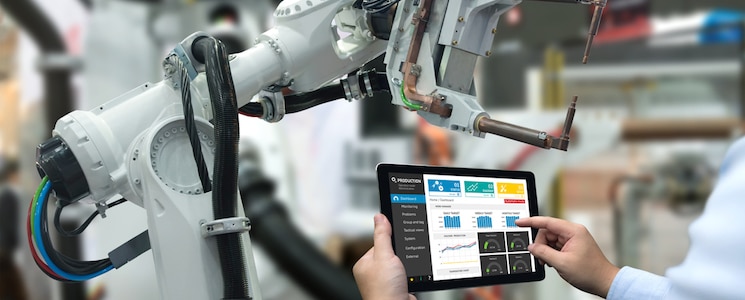
Selecting the appropriate MES software system can be complicated. In addition to the operational and functionality needs of the industry, there are many basic things to consider. There are a lot of choices out there. It’s important to consider whether there is a suitable Commercial-of-the-shelf (COTS) solution for your company or whether it would be more beneficial to consider custom development. Making the wrong software selection can ripple through an organization. There are many risks involved to software implementation. This article addresses two common types of MES, the risks to look out for with software implementation, and the features of each option to consider when making your final MES choice.
Custom vs. COTS
MES solutions happens in two main ways. A custom-built MES solution is designed accommodate to specific operational processes. The coding and functionality of a custom MES solution can be catered to unique industry needs. Alternatively, a Commercial Off-The-Shelf (COTS) system is a ready-made system that is refined to a level of compliance that and best practice that is not typically achievable with a custom solution. The licensure and maintenance costs of a COTS MES solution are also significantly lower in comparison to customized MES.
Selecting the Right MES While Mitigating Risk
During MES implementation, there are technical and change management risks that must be taken account in addition to these other serious risks such as delayed schedules and performance degradation while adopting a new solution.
There are many risks involved in selecting software. These include:
Budgetary risks. Selecting the wrong MES can be costly, and missteps can result in huge budget impacts. Issues such as reinstallation due to project failure, or soaring costs for customizations can lead to budgetary issues.
Operational risk. If software is added incorrectly, it can disrupt operations, stall organizational processes, and injure profitability. Complex and discrete manufacturing operations need results fast and cannot afford to waste time tinkering with buggy MES software implementations.
Program risk. Adding an inappropriate MES risks derailing other programs running in the enterprise. Incompatibilities can crop up, leading to expensive reconfigurations. In some cases, existing applications that no longer function in conjunction with the MES system will need replacement. An installation project can turn from an upgrade of one piece of software to a larger project where two or more applications have to be replaced.
Customized MES Software Implementations
Risks are especially pronounced with customized software implementations where over configuration and scope creep are commonplace. After the basics specifications of the project begin, there can often be a tendency to add, update, or change requirements. Many realize that the current project offers an opportunity to solve other organizational issues. Very quickly, adding a few lines of code turn into MES application adjustments that wander far from the original scope of the project.
Making too many changes can have an adverse effect on the relationship between related areas of functionality. One minor change can cause a ripple effect and unforeseen consequences throughout the MES suite and other associated applications. Every reconfiguration and added functionality challenges the data transfer, interoperability, and testing arenas. The more pieces that are added, the higher the testing demands escalates. When projects run on a tight deadline, it’s likely for accumulated bugs to fall through the cracks, unless the right solution is being implemented by the right team.
Custom software programmers seek to minimize these problems by building parts of their application with generic items. They fill in the gaps of generic building blocks with custom code. However, by doing so, it becomes more challenging to deliver software that meets the project scope.
Commercial Off-The-Shelf (COTS) MES Software Specifications
Commercial Off-The-Shelf MES, on the other hand, is implemented against a set of standards. This option allows complex manufacturing operation avoid certain risks, because the solution provider tests the software prior to implementation. Code introduction is done in conjunction with strict testing procedures as a part of COTS MES product lifecycle management, rather than a piece mail custom development approach. Testing prior to implementation ensures maximized performance functionality across the entire product suite.
COTS is often industry specific. This type of software benefits from being reviewed by active user communities in particular industries. The code utilized in this type of software is designed to withstand the process specifications of each particular industry.
Gartner advises those in discrete manufacturing and those with complex products to find an MES that is tailored to their specific industry. The reason is simple. Each vertical has different processes, requirements and goals. Those venturing away from a COTS that is aligned to their vertical may soon find themselves immersed in problematic implementations, regular bug fixes and, at times, project failures. Such issues can sometimes lead to expensive retrofitting of a COTS solution with custom development.
Download our MES Toolkit to find out how to minimize risk in your MES implementation. This includes program risk, budgetary risk, and operational risk, as well as technical and configuration risk.





